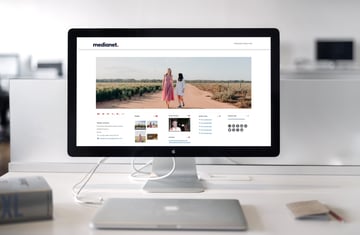The icing on the cake of a press release: digital assets

A common mistake with many press releases is they stop just short of presenting all possible elements of a ‘full and useable story’ to journalists and editors.
Having taken careful pains to craft a release to be as effective as possible, the key is to support your release with images, video, audio grabs and infographics, as well as directional pointers and links to add context and information. In the age of digital media, this will drastically increase your stories' appeal.
Look for opportunities
Because of the increasing time pressures journalists face to get their stories out first, ready-to-use stories are in high demand. As you are planning your campaign and drafting your release, think about how to round out your release, ensuring it facilitates access to sources that will help tell the story – most importantly visually as well as textually.
When you step back and think of the issue or topic that’s the strongest angle for your release, is there a relevant image, video or audio file that could drive home the messages you want to convey and enhance its interest value?

For example:
-
For event related releases have you explored the photo opportunities and potential? Is there a proactive image you can attach that will directly relate to the event, or can you arrange ahead of time to place images on an accessible image platform?
-
If the story is centred on the achievement of an individual is there a colourful photo of that person (or small group of people) that’s immediately available to complement the release?
-
If your release is heavy on data-driven information or statistics, could these be communicated most clearly by an infographic or visual illustration?
-
If the release relates to a location or series of locations around Australia, could it be supplemented with a link to a map?
A simple checklist not to forget
Adding assets to enrich your release isn’t something that has to be complicated.
Fortunately it’s very rare that an organisation doesn’t already have a go-to bank of images that form part of its communications and own website publishing activity at their fingertips. So before thinking you don’t have something to match the content of your release, it pays to check out the multimedia resources you already have access to.
The process of putting together a media release rich with digital assets is becoming simpler and the case for doing so more and more compelling.
When compiling these digital assets, here are a few other things to remember that will help make your story more appealing to journalists:
-
The prospect of a photo being used will automatically be maximised if you include a good caption. No photos should be sent without a caption, and if necessary a photo credit.
-
Captioning videos with subtitles is also becoming expected and is often favoured for social media use.
-
Embedded links at key points in a release are fine, but you can also strengthen your release if you bullet point the links as full or abbreviated URLs at the bottom of the release.
-
When your release is about a newly published research report or survey results it is most helpful if you provide a source link or actually attach the source report or survey. This will ensure the journalist gets instant access to what they need to understand the full content of your release and as a basis for their own story research. You do yourself a favour by doing the journalist or editor that favour.
If you need some help crafting a well-structured media release, use our free template.
When you have gathered all the assets needed to complement your story, use a PR distribution platform to get your release out to all the most relevant journalists and newsrooms.




